What is mindfulness?
How did mindfulness become scientifically validated?
Global Secular Mindfulness Practices
Traditional Chinese Mindful Practices
Traditional Japanese Mindfulness Practices
Modern Mindfulness Practices
What is mindfulness?
Mindfulness practices are not about filling the mind, but about the mind filling the present moment. Gentle attention is placed on a point of focus in the here-and-now, and each unique and changing moment is witnessed, or 'surfed', without inviting judging thoughts or rumination. Whatever has already arrived and is necessary on the broader scale of things is met with an open and accepting awareness - with an open heart. In this way it delivers long-term inner peace as it enables people to gain a tolerance for the constantly changing and unpredictable natural world they live in. These practices have been present within different cultures at different times around the world; especially in Asia - perhaps most famously in ancient China as 'Zen', which was then carried over to Japan, and also in ancient India as yoga. Now mindfulness has a modern secular form which is rooted in scientific understanding.
How did mindfulness become scientifically validated?
Mindfulness-Based Stress Reduction was made popular by the work of Dr. Jon Kabat-Zinn; an MIT graduate who is now Professor of Medicine Emeritus at the University of Massachusetts Medical School. In 1998 he published a paper in the peer-reviewed journal Psychosomatic Medicine which showed that secular mindfulness meditation increased the healing of psoriasis skin lesions compared to a control group who received a normal treatment for the condition. After this evidence, many other scientists became interested in the applications of mindfulness and now an increasing number of top universities have departments dedicated to researching the potential of mindfulness meditation. See the dedicated sites for Oxford University, Harvard Medical School, UCLA, and University of Massachusetts Medical School for examples.
Global Secular Mindfulness Practices


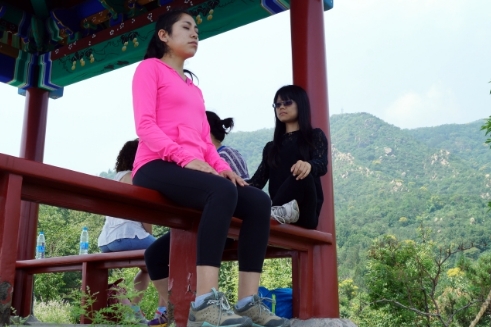
Seated mindfulness meditation is the most efficient route to increasing long-term mental resilience. With the spine upright; rising from the hips all the way up to the crown of the head, the vertebrae are stacked on top of one another so that they can support the weight of the torso. This allows for significant muscular relaxation to take place, meaning that the build-up of emotional tension can be more easily identified and released. With shoulders completely relaxed, and the belly open and soft, sounds, thoughts, and feelings come and go as one practices guiding one's attention away from the busy rumours of the mind, and back to the flowing, graceful, reflexive movements of the breath that can be felt in the nose and the abdomen. Distracting thoughts and memories are reframed as being empty of any immediate practical value so that one can return to the peaceful 'ocean waves' of the breath; allowing the gentle washing in and washing out to carry one to a more tranquil condition of body and mind - a condition rooted in the true nature of the present moment.
Traditional Chinese Mindful Practices

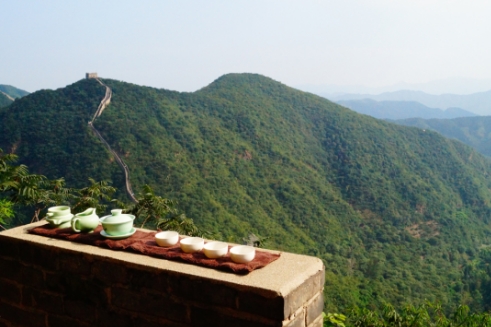
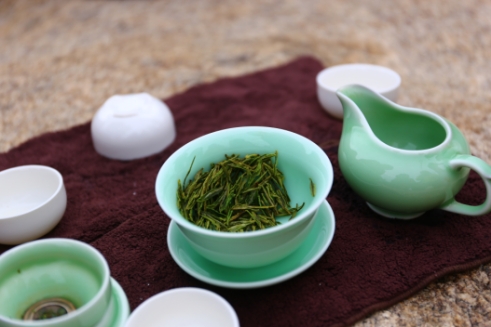
Mindful green tea drinking emerged out of the ancient zen monasteries of China. Similarly to mindful eating, green tea drinking brings attention to our bodies' automatic reactions to food and drink when they are placed in front of us. However, a green tea ceremony also brings the benefits of mental alertness after drinking, as well as a medicinal dimension - perfect for staying awake during meditation and practicing being kind to our bodies. By noticing how the basic elements of water, wood, fire, earth, and metal come together to produce one cup of tea which then becomes a seamless part of our being, we can root ourselves in nature in a very simple and rewarding way. The preparation and serving of green tea lends itself very well to breaks between other activities and revitalising oneself in preparation for the next, and also to socialising in general. The tradition of mindful tea was better preserved in Japan after it was carried over from China, however it is now returning to China to reclaim its roots.
Mindful Chinese Calligraphy
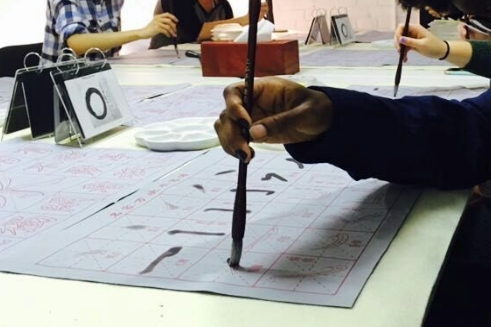


Mindful chinese calligraphy goes beyond the writing of just a symbol - the intention is to write the mindful mind or heart itself onto the paper. In order to do this, the body must experience the 'ease of being' that comes from acceptance and compassion for all things - allowing the calligrapher to utilise the relaxation in his or her fingers to twist the brush fluidly and flexibly along with the hand, arm, and the rest of the body and breath, so that the fine ink can render a dynamic and beautiful character. If the fingers become stiff or shaky with frustration or excitement, for example, then this will be observable in the character. If all judgement can be dropped - by the calligrapher accepting all imperfections as an essential ingredient of what makes something naturally beautiful, all obstacles between the calligrapher's heart and brush can be dissolved and an innate positivity can flow effortlessly onto the paper - visible in a fluid, dynamic, and mysteriously beautiful symbol.
Mindful Chinese 'Written Spirit' Painting


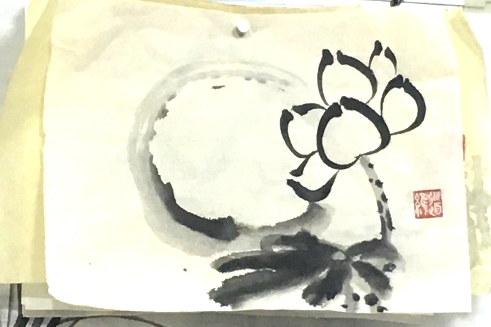
Mindful chinese 'written spirit' painting utilises traditional Chinese calligraphy skills to render any deep inspiration the painter receives from the natural world surrounding him or her in the most simple, dynamic, elegant, and spontaneous way. Often the painter 'grows' various mountains, trees, and other plants as if s/he were those things as they were emerging, requiring an embodiment of the dynamic natural spirit and intention of each painted feature. This wholesome activity, a favourite of ancient Chinese scholars who wished to hike in the serene mountains beyond the pressures of their civic duties, can recreate the physical sensations of a spectacular journey through the countryside, not only visually, but in a deeper way than the real thing - as if the painter was directly experiencing every naturally inspiring feature in the painting. This grounding in nature can become a very soothing and addictive practice, after which the natural world encountered outside of one's painting practice takes on more vividness, intrigue, and a deeper existential meaning.
Internal Martial Arts

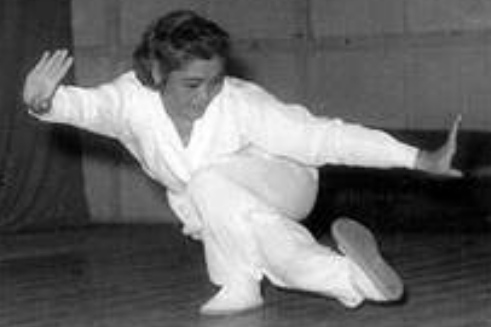

Internal martial arts differ from their external counterparts (although overlaps do exist) in the way they emphasise an internal sensitivity and conditioning that requires a relaxed and sustained focus on the body over long periods of time, and with great attention to detail. The most demanding internal martial arts systems, such as YiQuan 'Natural Intention Boxing', root themselves in directly observable natural phenomena in order to avoid being drawn into mystical ambiguity. As well as benefitting a practitioner through providing an opportunity to do some mindful movement, most of these arts have a health-preservation system built into them; starting with the posture and the mind, and then one's organs and cells. All of this together can bring increased trust in one's biology, robust health, a more open and flexible body, a dignified general posture, and a sense of confidence when potential social conflict looms.
Mindful Miniature Tray Landscaping (PenJing)

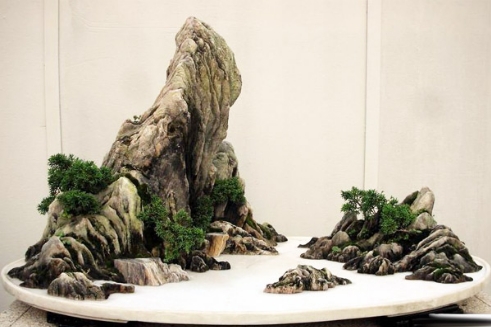

Mindful miniature tray landscaping has a similar quality to mindful chinese 'written spirit' painting in that one seeks to take a journey through the landscape one is creating. In trying to emulate nature, but on a smaller scale, one must get to know the general spirit and feeling of a landscape - connecting with nature and looking for materials that resemble scaled-down versions of trees and rocks. The living plants and often dynamic water features bring a real sense of the basic elements and serenity of nature into one's home or backyard. Placing a miniature tray landscape near where one habitually meditates adds an obvious natural quality to one's environment which can encourage a more grounded and peaceful sitting practice. Caring for, and cultivating the plants also gives one a chance to practice compassion and loving kindness in the same way that
mindful gardening does.
Traditional Japanese Mindful Practices
Mindful Miniature Trees (BonSai)
The practice of BonSai, as with most mindful arts in Japan, was carried there from China as an off-shoot of
PenJing miniature tray landscaping - called 'PenCai'. BonSai practitioners seek to understand the essence of a tree and try to show that essence through encouraging specific growth patterns. This peaceful art delivers a deeper awareness of the inherent intelligence and structural vulnerability contained within plants, which brings inspiration and insight to the person cultivating - a deeper understanding of what plants and humans share as channels for the common life process that manifests through slowly changing bodies of cells. Caring for plants also allows the practitioner a chance to practice compassion - a benefit of
mindful gardening in general.
Modern Mindfulness Practices
Mindful Hiking in Nature
Mindful hiking builds on a standard mindful walking meditation practice by taking the practitioner on a journey through spectacular natural scenery - immersing the hiker in 'true nature' by embedding him or her in an environment away from human constructs. The symbolic value of mountains, trees, and landscapes in general is often used by modern secular mindfulness instructors as they guide students in various ways. Beyond the obvious benefits of fresh air and exercise, mindful hiking can reinforce useful natural metaphors to be applied within formal mindfulness disciplines. Experiences of being completely immersed in wholesome nature may be carried back into one's home as a boost for daily domestic mindfulness meditation.
Mindful Photography
Mindful photography is still an emerging mindfulness practice, whereby the photographer explores their environment looking for angles on subjects which they feel expresses their own mindful insight. Taking photos of course roots one in the present moment, and the more the body can relax and remain stable, the more success the photographer can have in capturing the clear image that they want. In this way, mindful photography can be an incredibly engaging and rewarding practice.
Mindful Gardening
Mindful gardening involves recognising the common nature that we share with plants and caring for plants in the same way that we mindfully care for ourselves. The houseplants we look after are most often a good indicator of where we are with our mindfulness practice and self-compassion. If we are caring for ourselves properly then we will be caring for our plants properly. Bringing greenery into the home - something we can begin to do instinctively more and more once we have a mindfulness meditation discipline in our lives - is an important part of reminding ourselves that an imperfectly perfect natural world exists beyond the geometric concrete boxes we choose to build and live within. In this way, plants inspire us and ground us in the life process that we share with them - helping us to celebrate being alive, as part of an extended family sharing common ancestors going back millions of years.
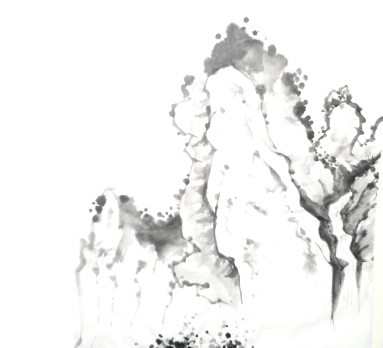
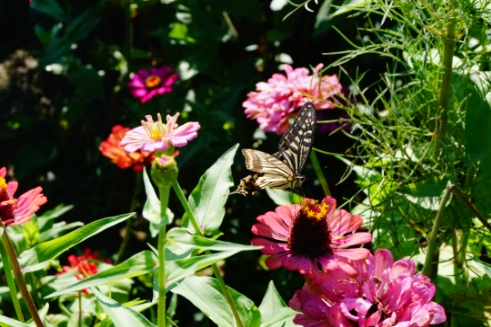
 daoscape
daoscape



















